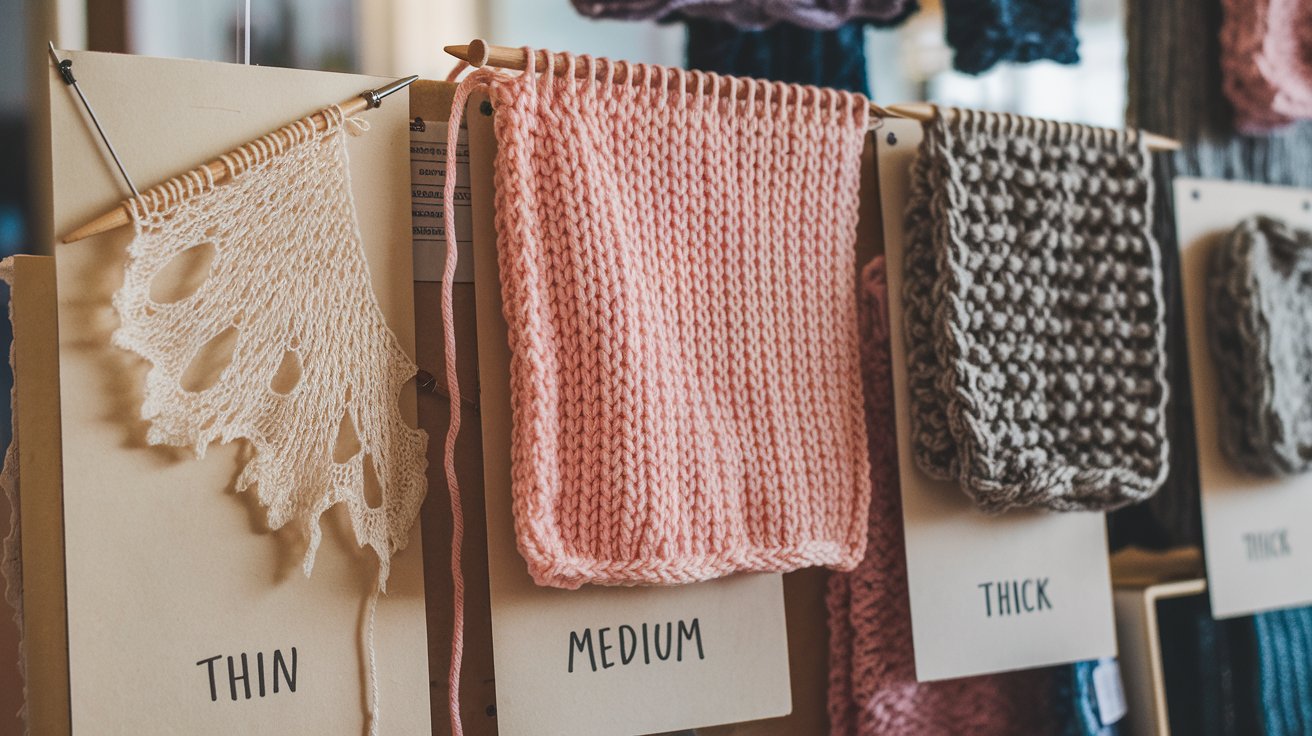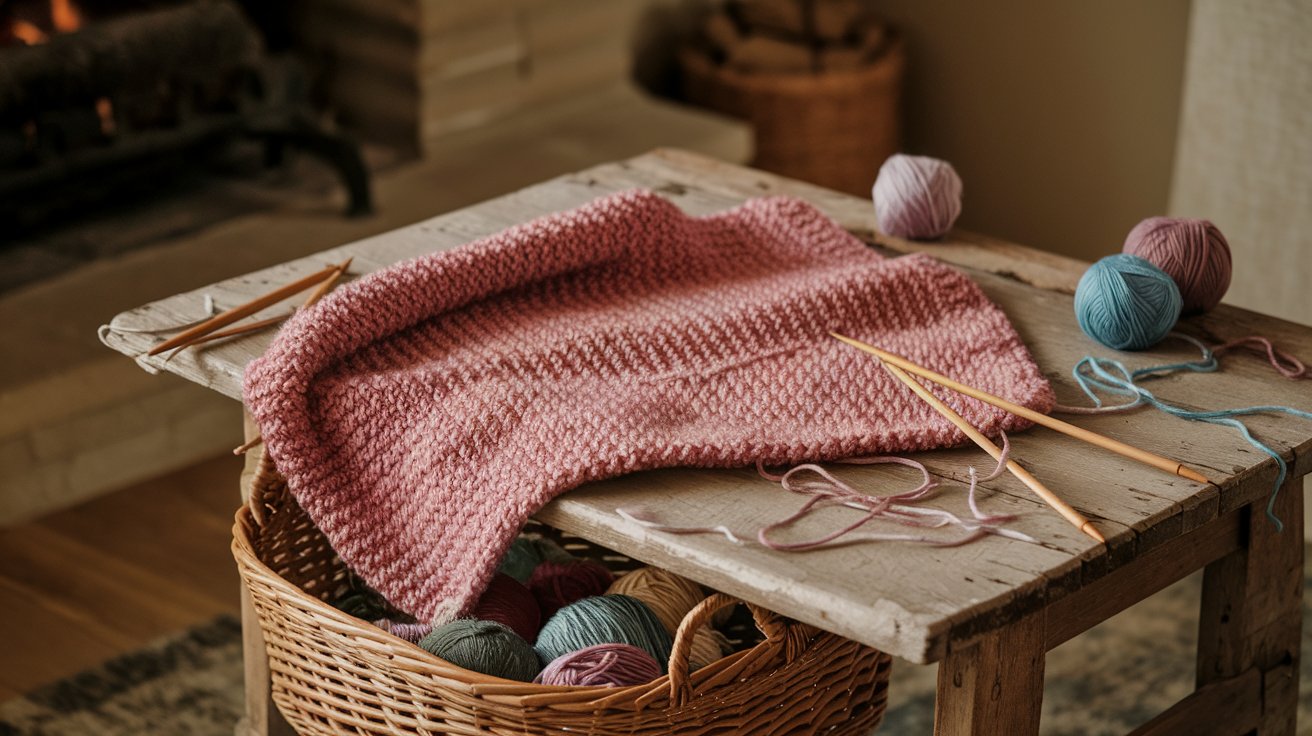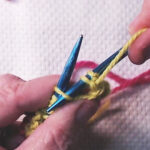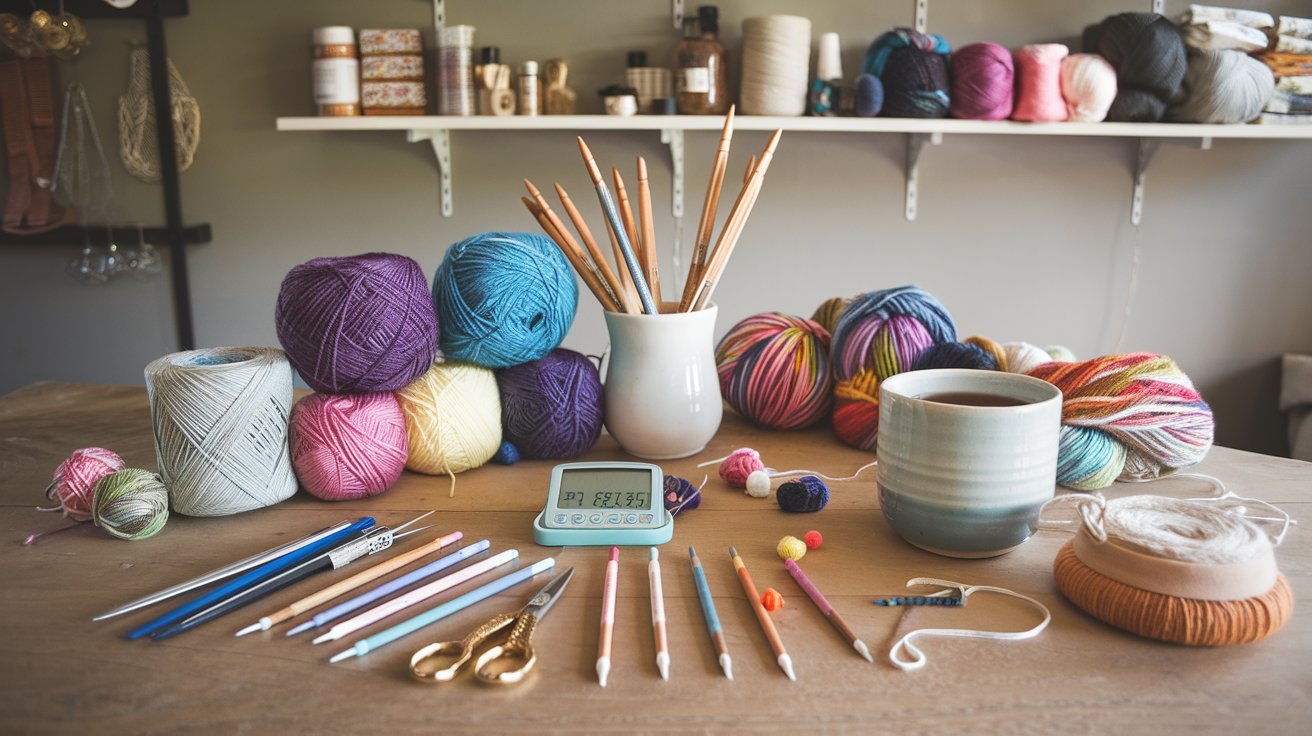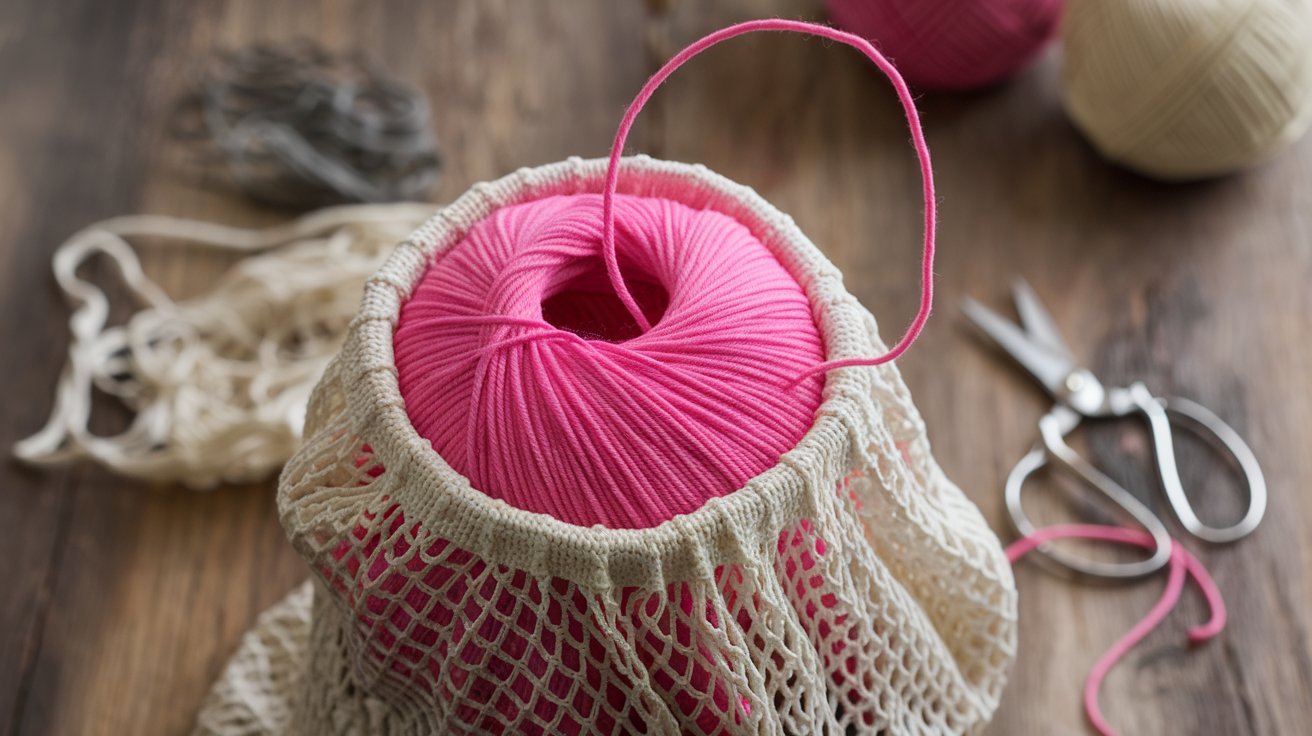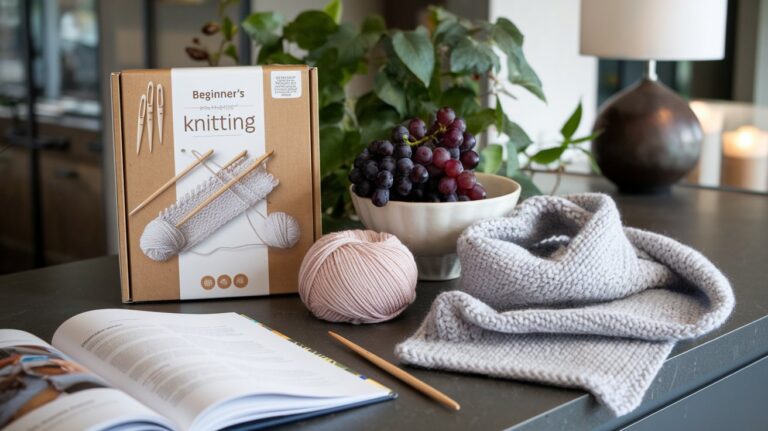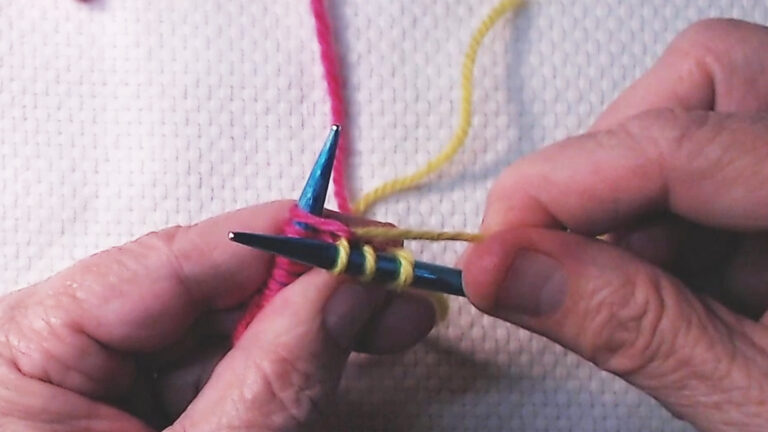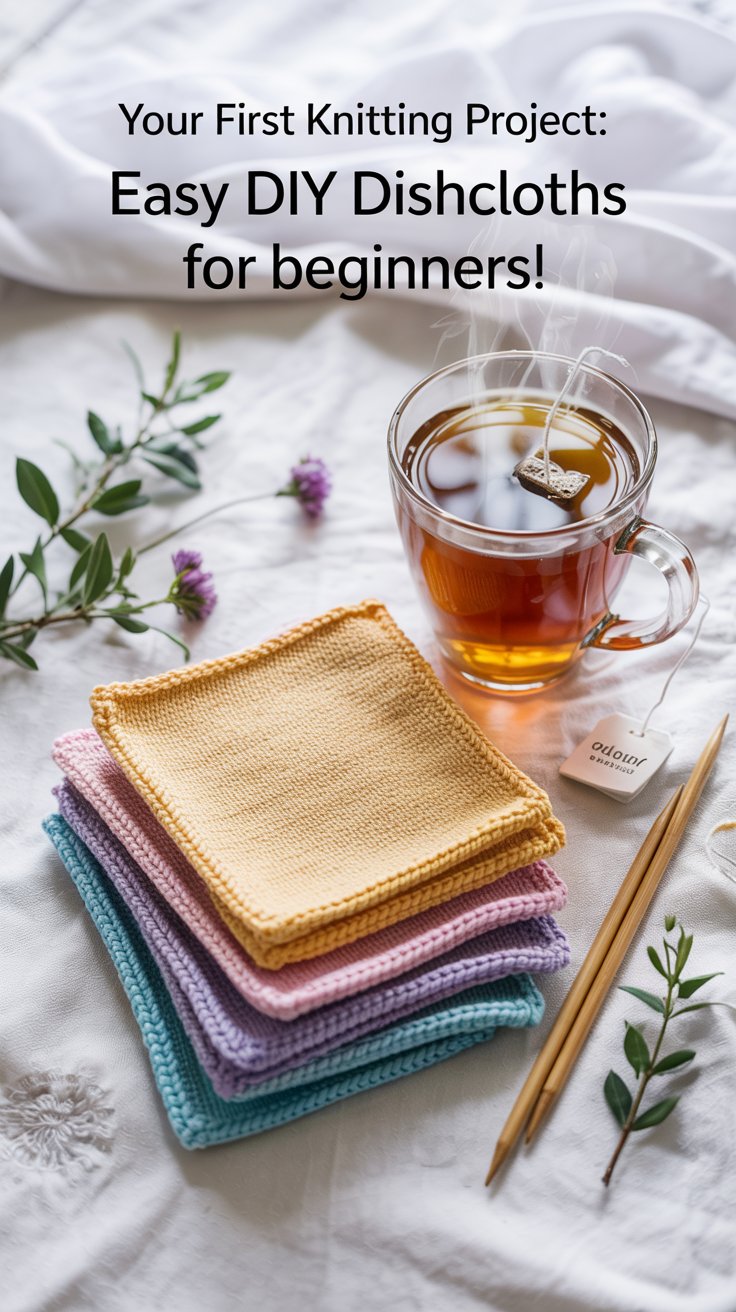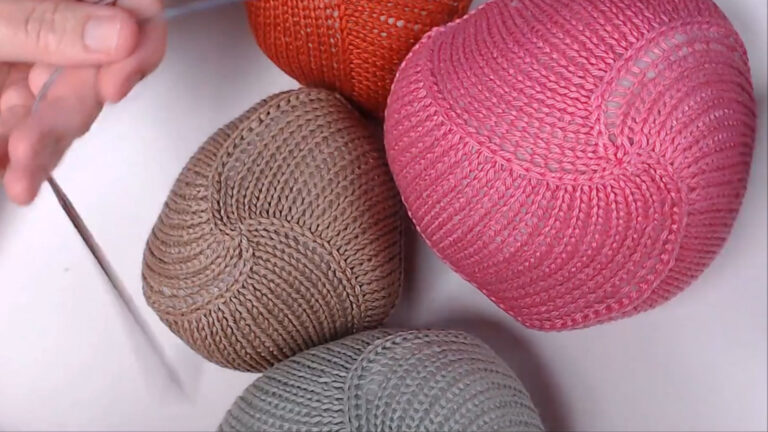How to Work a Yarn Over (YO) on Both the Knit and Purl Side
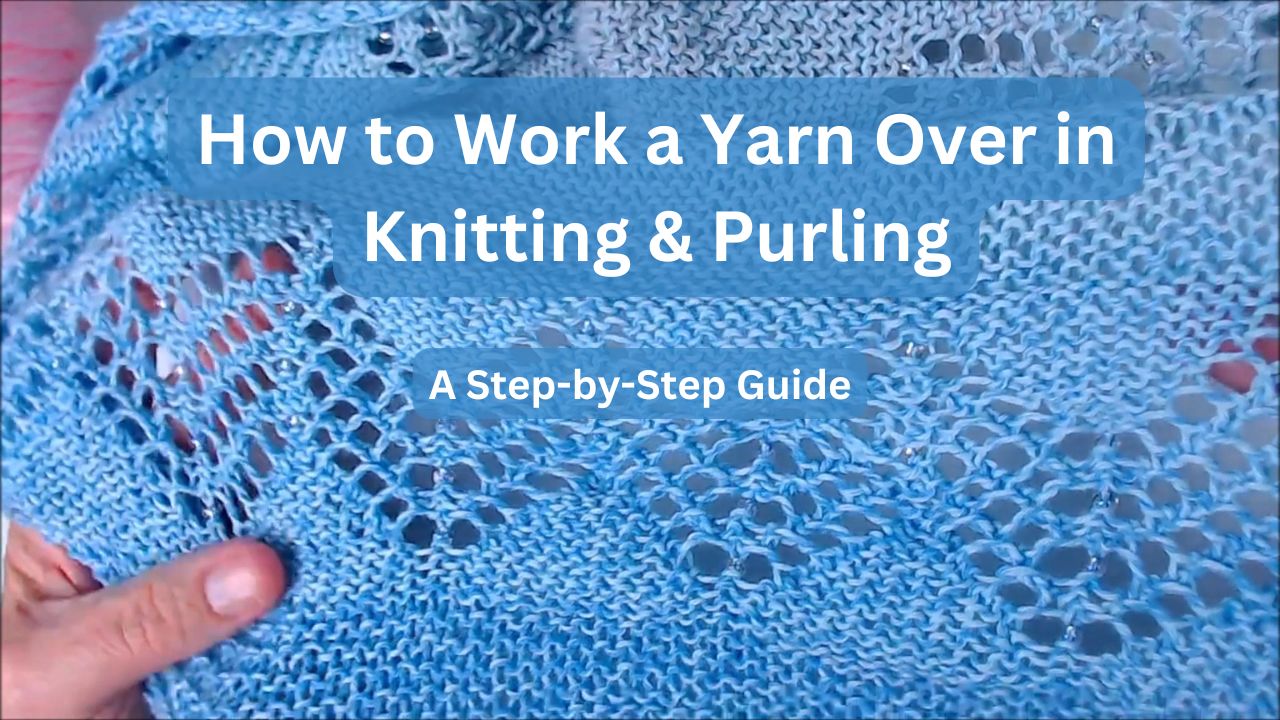
A yarn over (YO) is a simple yet powerful knitting technique that creates an extra stitch and a decorative hole (eyelet) in your fabric. It’s commonly used in lace knitting, but you’ll also find it in textured patterns and decorative designs.
In this tutorial, I’ll show you how to work a yarn over on both the knit side and the purl side. Whether you’re following a lace pattern or accidentally creating yarn overs in your knitting, understanding this technique will help you gain more control over your stitches.
Video Tutorial: Watch the Step-by-Step Guide
For a full demonstration of how to work a yarn over on both the knit and purl sides, watch my step-by-step tutorial below:
1. What is a Yarn Over?
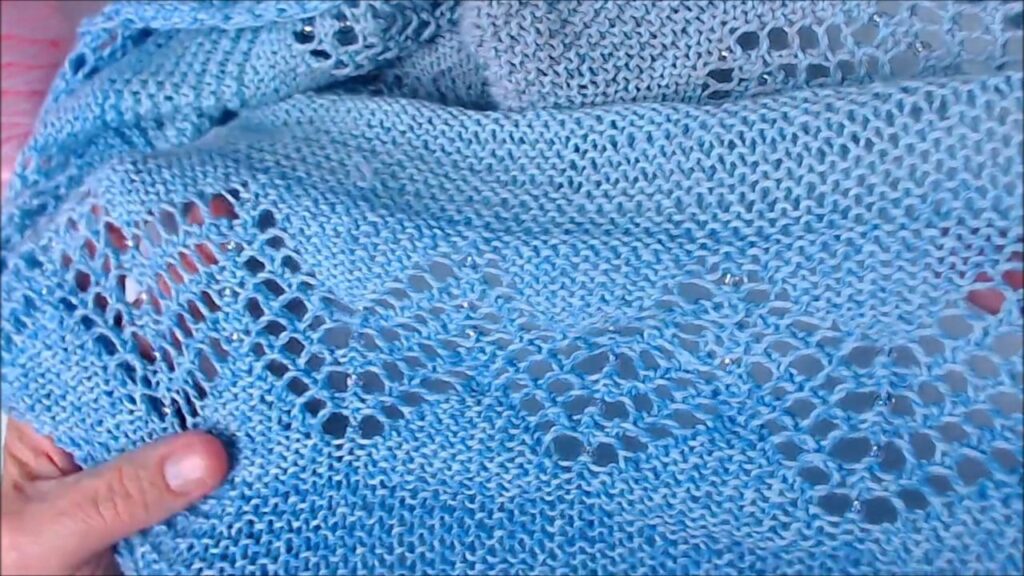
A yarn over is a type of increase that creates an intentional hole in your knitting. If you’ve ever noticed an unexpected hole in your work, you may have accidentally made a yarn over without realizing it.
Yarn overs are used for:
- Lace knitting to create delicate patterns.
- Decorative elements in scarves, shawls, and blankets.
- Shaping increases in certain patterns.
Picture This:
A close-up image of a lace scarf featuring an intricate yarn-over pattern, highlighting the open spaces and delicate details.
2. How to Work a Yarn Over on the Knit Side
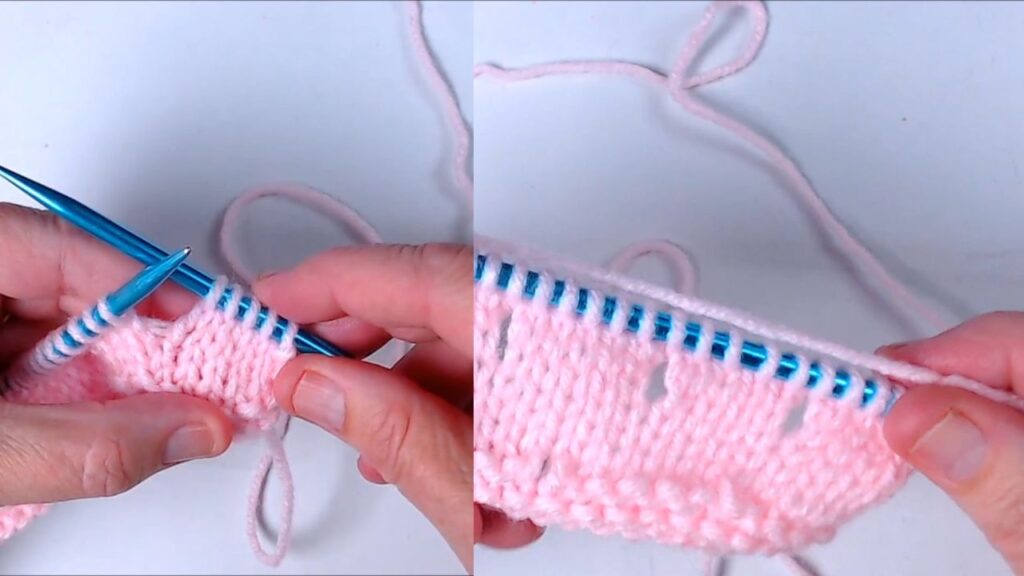
When working on the knit side (right side of stockinette stitch), the yarn over is created by bringing the yarn forward and wrapping it around the needle before knitting the next stitch.
Step-by-Step Instructions:
- Knit to the point where you want to place the yarn over.
- Bring the yarn to the front between the needles as if you were about to purl.
- Knit the next stitch as usual, making sure the yarn stays in front.
- After knitting the stitch, you’ll see an extra loop over the needle—that’s your yarn over.
Why It Works:
This method adds an extra stitch to your work while leaving a decorative eyelet, perfect for lace knitting or textured patterns.
Picture This:
A side-by-side image of stockinette stitch before and after adding yarn overs, with the eyelets clearly visible.
3. How to Work a Yarn Over on the Purl Side
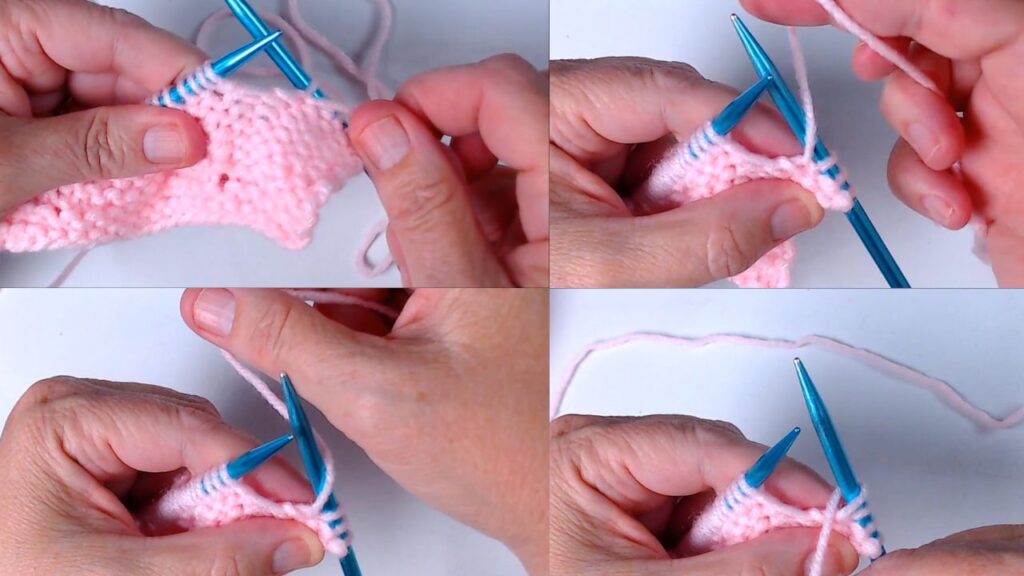
When working a yarn over on the purl side (wrong side of stockinette stitch), the process is slightly different. Instead of bringing the yarn forward, you’ll wrap it over the needle before purling the next stitch.
Step-by-Step Instructions:
- Purl to the point where you want to place the yarn over.
- Wrap the yarn over the right needle, bringing it up and over.
- Purl the next stitch as usual, keeping the yarn wrapped correctly.
- You’ll see an extra loop over the needle, which forms the yarn over.
Why It Works:
This creates a consistent eyelet effect, even on the wrong side, ensuring symmetry in lace and decorative stitch patterns.
Picture This:
A swatch of purl-side yarn overs, with close-up images showing the wrapping motion and the finished effect.
4. How to Work a Yarn Over When Switching Between Knits and Purls

Sometimes, patterns will ask for yarn overs between knit and purl stitches within the same row. Here’s how to do it correctly:
- If the next stitch is a knit: Bring the yarn forward, then knit.
- If the next stitch is a purl: Wrap the yarn over the right needle before purling.
Why It Works:
This ensures your yarn overs stay even and consistent, regardless of the surrounding stitches.
Picture This:
A swatch demonstrating how yarn overs look between different stitch combinations, showing knit-side and purl-side transitions.
5. Fixing Mistakes: How to Close a Yarn Over Hole

If you accidentally create a yarn over and don’t want the eyelet, you can close the hole on the next row by twisting the stitch before knitting it.
Step-by-Step Instructions:
- When you reach the yarn-over stitch on the next row, instead of knitting into the front, knit into the back leg of the stitch.
- This twists the stitch, preventing the eyelet from forming while still keeping the extra stitch.
Why It Works:
This method lets you fix mistakes without unraveling your work, making it a valuable hack for all knitters.
Picture This:
A step-by-step image series showing how to twist the stitch to eliminate the yarn-over hole.
Conclusion
Mastering the yarn over technique will open up endless possibilities in your knitting. Whether you’re working on lace patterns, decorative stitches, or just experimenting with texture, understanding how to create and control yarn overs will improve your overall knitting skills.
Stay tuned for future posts where I’ll share free lace knitting patterns and techniques to take your knitting to the next level.
How to Fix Dropped Stitches at the End of a Row – Step-by-Step Guide
Full Video for How to Work a Yarn Over (YO) on Both the knitting and the purl side

